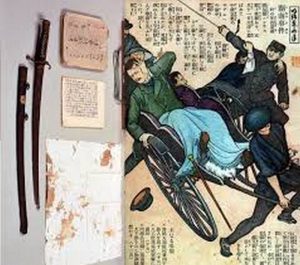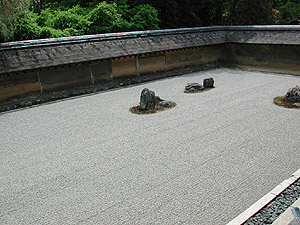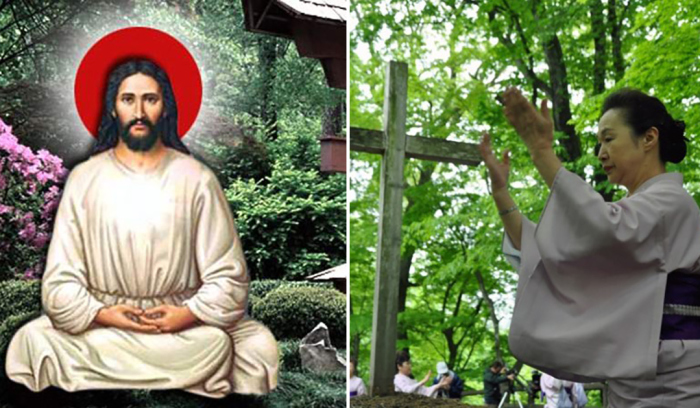did not leave Russia without an emperor
 Satsumi rebellion shocked Japan. For almost 8 months of 1877, an untitled aristocracy led by the samurai Saigo Takamori occupied part of Kyushu Island. Anti-government sentiments were unusually strong in the 70s of the 19th century due to a number of reforms carried out by the authorities. One of the main causes of the uprising is the fall in the authority of the samurai. Warriors could not forgive such an insult. The abolition of pensions, the abolition of the samurai army itself (the nationwide appeared in its place), the ban on the carrying of weapons – all this, as well as other modernizations, were progressive solutions designed to put an end to archaism. But the samurai could not just take it and let them send themselves to the sidelines of history. Then came the unpopular land-tax reform, which caused violent fermentation among the peasantry. And Saigo Takamori decided that it was time to act.
Satsumi rebellion shocked Japan. For almost 8 months of 1877, an untitled aristocracy led by the samurai Saigo Takamori occupied part of Kyushu Island. Anti-government sentiments were unusually strong in the 70s of the 19th century due to a number of reforms carried out by the authorities. One of the main causes of the uprising is the fall in the authority of the samurai. Warriors could not forgive such an insult. The abolition of pensions, the abolition of the samurai army itself (the nationwide appeared in its place), the ban on the carrying of weapons – all this, as well as other modernizations, were progressive solutions designed to put an end to archaism. But the samurai could not just take it and let them send themselves to the sidelines of history. Then came the unpopular land-tax reform, which caused violent fermentation among the peasantry. And Saigo Takamori decided that it was time to act.
The uprising began. And although it lasted for almost 8 months, all this time the samurai suffered defeats. Power was stronger, and they could not do anything about it. The final point was set at the Battle of Kagoshima. Government forces inflicted a devastating defeat on the samurai. Takamori, in order to avoid captivity, had to say goodbye to life, as did true warriors.
See also: Christians versus Samurai: What caused the bloodiest rebellion in Japanese history
Tsuda Sanzo was one of the soldiers serving in the national army. At heart, he, like many warriors, admired Takamori, considering him the embodiment of the Japanese spirit. But he could not go over to his side, because he did not share archaic samurai views. All this led to a serious spiritual conflict between a soldier who was only 22 years old at the time of the uprising. Although Takamori fell, and all the soldiers of the national army automatically became the heroes of the entire Land of the Rising Sun, the psyche Sanzo suffered serious damage.
Soon after the suppression of the rebellion, the situation in the country calmed down. True, there was a legend among the people that Takamori did not die under the walls of Kagoshima. People claimed that he imitated his death. But in fact, the samurai managed to escape to another country (the Russian Empire was most often mentioned) and hid in anticipation of the right moment to return. The prospect of a new riot frightened people. But several years passed, passions subsided, rebellion and its leader became the property of history. Like, however, the soldiers who crushed the rebellion.
In 1882, Tsuda began to work in the police. From the former splendor of the hero there was not a trace left. He dreamed of great feats and glory, but instead received the “Groundhog Day”. The gray and dull life of an ordinary policeman with a modest pay and low status. Proud, unsociable and gloomy all the time, Sanzo behaved like a real hermit. He had no friends, no family. Dreams of realizing one’s own potential have replaced this. In addition, he found for himself and the main enemy – foreigners. And all, without exception. The former soldier believed that they wanted to conquer Japan. And almost every day he was forced to put up with his own pride, since the protection of foreigners was part of his official duties. All overseas guests aroused only disgust from him, since they were small fry, not able to bring any harm to the country. However, hatred gradually increased.
Towards your “happiness”
So 9 years have passed. Sanzo continued to work in the police, hated strangers and dreamed of drastically changing his life. And suddenly, like news from a clear sky, Tsarevich Nikolai Alexandrovich, the heir to the Russian throne, arrives in Japan. Tsuda realized that his visit was that very “happy ticket”. The country of the rising sun for the first time was to visit the royal lady. Naturally, Sanzo was one of those police officers who were supposed to guard overseas guests. The former soldier decided to kill Nikolai.
Here you need to make a small digression. The Russian Tsarevich himself was not going to visit Japan – this was the decision of Alexander III. The land of the rising sun became the last point in the eastern journey of Nicholas, the Greek prince George, as well as their numerous retinue, consisting of princes, diplomats and other “officials”.
In Japan, on the occasion of the arrival of such a high-ranking person, real excitement reigned. The authorities put on the ears of ordinary people, and law enforcement officers, and officials. The task sounded very simple: to show Nikolai real oriental hospitality and hospitality. But at the same time, many feared that the Tsarevich’s visit was not of a good nature. There was a rumor that the prince would come for “reconnaissance” and “probing the soil”, since the Russian Empire secretly wanted to capture the Land of the Rising Sun. The intensity of passions was so strong that the large local press every day came out with materials on this topic, trying to calm the population.



